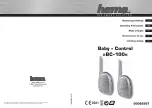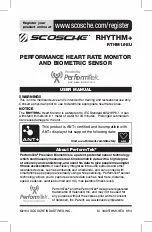
38
Code Page:
[
DEC Multi
, PC 437, PC 850, PC 852, PC 857, PC 860, PC 861, PC 862, PC 863, PC 865,
PC 866, PC 869, ISO-1, ISO-2, ISO-5, ISO-Hebrew, ISO-Cyrillic, ISO-Greek]
This selection is only available in 8-bit emulations in Multinational Mode. The
default code page is based upon language and emulation selected. To
determine which sets are loaded for each code page, refer to the
3153
Programmer’s Reference Guide.
KEYS: F5
Return Key:
[
CR
, CR-LF, TAB]
Select the code the return key on the main alphanumeric keypad transmits.
Enter Key:
[
CR
, CR-LF, TAB]
Select the code the enter key in the numeric keypad transmits.
Alt Key (left):
[Meta, Compose, Funct, Scroll-Lock,
Alt Key
]
Select the way in which the left ALT key behaves. The
Alt Key
selection refers
to the right Alt key.
♦
Meta
– sets the most significant bit for the next character and allows 8-bit
data to be generated from the keyboard.
♦
Compose
– precedes sequences of keys to create a character that is not on
the keyboard but is available in the active character set.
♦
Scroll
Lock
– causes the Alt key to function as the Scroll Lock key, and is a
toggle to hold/free data on the screen. It requires the use of flow control
for the host port
Rcv
Prtcl
.
♦
Funct
– causes the Alt key to function as the Funct key on an
ASCII keyboard.
♦
Alt Key
– causes the left Alt key to behave identically to the right Alt key.
Pound Key:
[
U.S.
, British]
Choose the character transmitted for 23h—the US pound (#) or the British
pound (£).
Return Key Repeat:
[On,
Off]
Select whether the Return key located on the alphanumeric keypad will repeat
when held down for more than half a second (only selectable when “Key
Repeat” =
On
).
















































